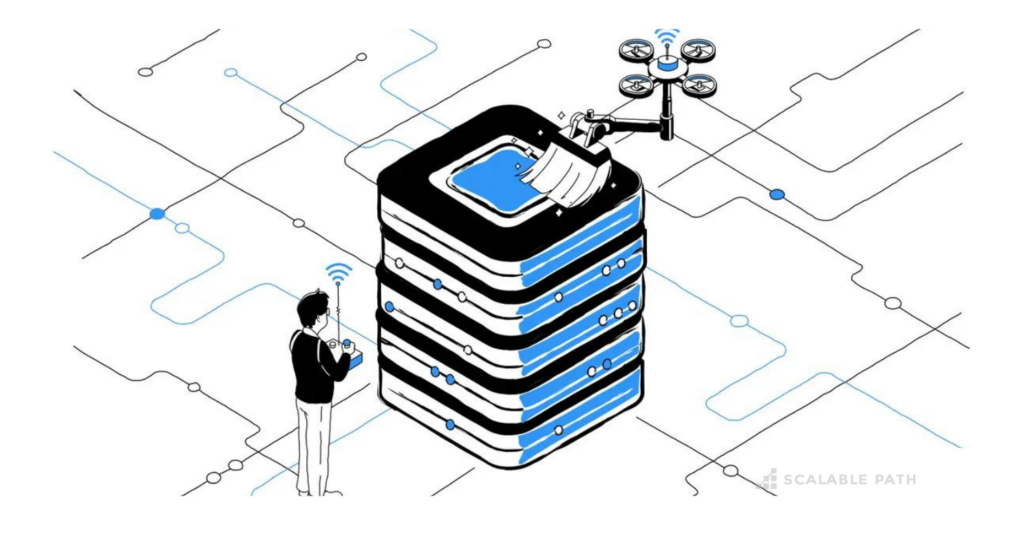Cloud data analytics has revolutionized the way businesses analyze and derive insights from their data. With the ability to store and process large volumes of data in the cloud, organizations can now leverage advanced analytics techniques to gain valuable insights and make data-driven decisions. In this article, we will explore how to harness the power of cloud data analytics and unlock its full potential.
What is cloud data analytics?

Cloud data analytics refers to the process of analyzing large volumes of data stored in the cloud using various analytical techniques and tools. It involves collecting, storing, processing, and analyzing data to uncover patterns, trends, and insights that can drive business growth and innovation.
Benefits of cloud data analytics
Cloud data analytics offers several benefits over traditional on-premises analytics solutions. Some of the key benefits include:
– Scalability: Cloud data analytics platforms can easily scale up or down based on the organization’s needs, allowing businesses to handle large volumes of data without investing in expensive infrastructure.
– Cost-effectiveness: By leveraging cloud-based analytics platforms, organizations can avoid the upfront costs associated with hardware and software purchases, maintenance, and upgrades.
– Flexibility: Cloud data analytics platforms offer flexibility in terms of data storage, processing, and analysis. Organizations can choose from a wide range of tools and technologies to suit their specific requirements.
– Collaboration: Cloud data analytics platforms enable seamless collaboration among team members, allowing them to share data, insights, and analysis results in real-time.
– Real-time insights: With cloud data analytics, organizations can analyze data in real-time, enabling them to make faster and more informed decisions.
Choosing the right cloud data analytics platform
When it comes to choosing a cloud data analytics platform, there are several factors to consider. These include:
– Scalability: Ensure that the platform can handle the volume and velocity of data your organization generates.
– Integration: Look for a platform that integrates well with your existing systems and tools.
– Ease of use: Consider the user-friendliness of the platform and the availability of training and support.
– Security: Ensure that the platform provides robust security measures to protect your data.
– Cost: Evaluate the pricing structure of the platform and consider the total cost of ownership.
Private Cloud Vs Public Cloud : Differences, Security, Cost and More
Collecting and storing data in the cloud
To harness the power of cloud data analytics, organizations need to collect and store their data in the cloud. This can be done through various methods, such as:
– Direct data ingestion: Organizations can directly ingest data from various sources, such as databases, sensors, social media, and IoT devices, into the cloud.
– Data integration: Data from different sources can be integrated and consolidated in the cloud using tools like ETL (Extract, Transform, Load) processes.
– Data lakes: Data lakes provide a centralized repository for storing raw and unprocessed data in its native format, allowing for flexible analysis and exploration.
Data preprocessing and cleaning

Before performing data analysis, it is essential to preprocess and clean the data to ensure its quality and reliability. This involves tasks such as:
– Data cleansing: Removing duplicate records, correcting errors, and handling missing values.
– Data transformation: Converting data into a suitable format for analysis, such as aggregating, filtering, or normalizing the data.
– Data integration: Combining data from multiple sources and resolving any inconsistencies or conflicts.
By properly preprocessing and cleaning the data, organizations can ensure that their analysis is based on accurate and reliable information.
Performing data analysis and visualization
Once the data is preprocessed and cleaned, organizations can start performing data analysis using various techniques and algorithms. This can include:
– Descriptive analytics: Summarizing and visualizing the data to gain insights into patterns, trends, and relationships.
– Diagnostic analytics: Analyzing the data to understand the causes and factors influencing certain outcomes or events.
– Predictive analytics: Using statistical models and machine learning algorithms to make predictions and forecasts based on historical data.
– Prescriptive analytics: Recommending actions or strategies based on the analysis results to optimize business processes and outcomes.
Data visualization plays a crucial role in data analysis, as it helps in presenting complex information in a visually appealing and understandable manner. Visualizations such as charts, graphs, and dashboards enable users to interpret and communicate the insights derived from the data effectively.
Leveraging machine learning and AI algorithms
Cloud data analytics platforms often provide built-in machine learning and AI capabilities, allowing organizations to leverage advanced algorithms for more sophisticated analysis. These algorithms can be used for tasks such as:
– Classification: Categorizing data into different classes or groups based on predefined criteria.
– Regression: Predicting numerical values based on historical data and relationships.
– Clustering: Identifying patterns and similarities in the data to group similar data points together.
– Anomaly detection: Identifying unusual or abnormal patterns in the data that may indicate potential issues or fraud.
By incorporating machine learning and AI algorithms into their data analytics workflows, organizations can uncover deeper insights and make more accurate predictions.
What is Cloud Computing: Definition, Types, and Functions
Ensuring data security and privacy in the cloud
As organizations store and analyze sensitive data in the cloud, ensuring data security and privacy is of utmost importance. Some measures to consider include:
– Encryption: Encrypting data both at rest and in transit to protect it from unauthorized access.
– Access controls: Implementing role-based access controls to restrict data access to authorized personnel.
– Data anonymization: Removing personally identifiable information from the data to protect individual privacy.
– Compliance with regulations: Ensuring compliance with data protection regulations, such as GDPR or HIPAA, depending on the industry and location.
By implementing robust security measures, organizations can mitigate the risks associated with cloud data analytics and protect their data from unauthorized access or breaches.
Scaling and optimizing cloud data analytics

As the volume and complexity of data continue to grow, organizations need to scale and optimize their cloud data analytics processes. Some strategies to consider include:
– Distributed computing: Leveraging distributed computing frameworks, such as Apache Hadoop or Spark, to process large volumes of data in parallel.
– Auto-scaling: Using cloud infrastructure services that automatically scale resources based on demand, ensuring optimal performance and cost-efficiency.
– Performance tuning: Optimizing queries, algorithms, and data pipelines to improve processing speed and efficiency.
– Monitoring and optimization: Regularly monitoring the performance of the analytics processes and identifying areas for improvement.
By scaling and optimizing their cloud data analytics workflows, organizations can handle increasing data volumes and ensure efficient and timely analysis, leading to better insights and decision-making.
Real-world applications of cloud data analytics
Cloud data analytics has a wide range of applications across various industries. Some examples include:
– Retail: Analyzing customer data to understand buying patterns, optimize inventory management, and personalize marketing campaigns.
– Healthcare: Analyzing patient data to identify disease patterns, improve treatment outcomes, and optimize resource allocation.
– Finance: Analyzing financial data to detect fraud, assess risk, and make informed investment decisions.
– Manufacturing: Analyzing sensor data to optimize production processes, predict equipment failures, and improve overall efficiency.
– Marketing: Analyzing customer behavior and campaign data to optimize marketing strategies, target specific customer segments, and measure campaign effectiveness.
These are just a few examples, and the applications of cloud data analytics are virtually limitless, with organizations across industries leveraging its power to gain a competitive edge.
Challenges and limitations of cloud data analytics
While cloud data analytics offers numerous benefits, there are also challenges and limitations to consider. Some common challenges include:
– Data quality: Ensuring the accuracy, completeness, and reliability of the data used for analysis.
– Data integration: Integrating data from multiple sources with different formats and structures can be complex and time-consuming.
– Data privacy and security: Protecting sensitive data from unauthorized access or breaches.
– Skill gap: Finding skilled data analysts and data scientists who can effectively leverage cloud data analytics tools and techniques.
– Cost management: Monitoring and controlling the costs associated with storing and processing large volumes of data in the cloud.
It is important for organizations to be aware of these challenges and address them effectively to maximize the benefits of cloud data analytics.
Future trends in cloud data analytics
The field of cloud data analytics is constantly evolving, and several trends are shaping its future. Some key trends to watch out for include:
– Edge analytics: Performing data analysis and processing at the edge of the network, closer to the data source, to enable real-time insights and reduce latency.
– Augmented analytics: Leveraging AI and machine learning to automate and enhance the data analytics process, from data preparation to insights generation.
– Hybrid cloud analytics: Combining the benefits of both public and private cloud environments to optimize data storage, processing, and analysis.
– Explainable AI: Focusing on developing AI models and algorithms that can provide transparent explanations for their decisions and predictions.
– Data governance and ethics: Emphasizing the importance of responsible data usage, privacy, and ethical considerations in cloud data analytics.
These trends are expected to shape the future of cloud data analytics, enabling organizations to extract even more value from their data.
Conclusion
Cloud data analytics has transformed the way organizations analyze and derive insights from their data. By harnessing the power of cloud data analytics, businesses can unlock valuable insights, make data-driven decisions, and gain a competitive edge in today’s data-driven world. From choosing the right platform to collecting and preprocessing data, performing analysis, and ensuring data security, organizations need to consider various factors to fully leverage the potential of cloud data analytics. With the right tools, techniques, and strategies in place, organizations can harness the power of cloud data analytics to drive innovation, improve operational efficiency, and achieve business success.

Antoniya Angilie Mcgowan BBJ GFE Long Island Islip Queens NYC Backpage Megapersonals Incall Outcalls( https://UrbanCrocSpot.org/ )